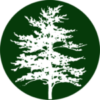1931 – 2015
Inducted 2015
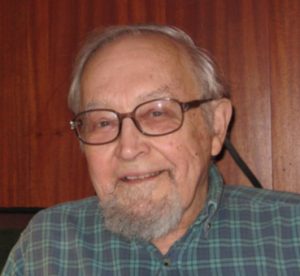 “We’re dependent on the environment. If we don’t take care of it, it won’t be there for us or for our children and grandchildren.” — Eugene Roark
“We’re dependent on the environment. If we don’t take care of it, it won’t be there for us or for our children and grandchildren.” — Eugene Roark
Born on March 25, 1931 Gene Roark was a graduate of the University of Wisconsin-Madison in a new program of conservation journalism. In 1960 Gene started to work in information and tourism for the then Wisconsin Conservation Department. He was Director of Tourism for the WDNR from 1970 to 1975.
Aldo Leopold’s philosophy of the land ethic had a profound influence on Gene‘s ideas on the environment. The Sand County Almanac by Aldo Leopold was an inspirational book for Gene. Because of his interest in the natural world, Gene joined the Madison Audubon Society as a teenager in the 1940s and has been a member ever since. He edited their newsletter for several years and was a board member.
Over his lifetime, Gene was instrumental in establishing a number of organizations. One of the founding members of the Wisconsin Chapter of The Nature Conservancy in 1960, he served as a board member, board chairman at various times, and as an active emeritus trustee. He was also one of the founding members of the Invasive Plants Association of Wisconsin in 2001. Gene is one of only a few members that was on the board of directors since its inception. Gene’s longtime interest in protecting forests and wetlands in Wisconsin as well as his personal concerns with the impacts of invasive plants made him a valuable board member and tireless advocate for controlling invasive plants to preserve Wisconsin’s natural areas. Gene was on the Board of the Wisconsin Conservation Hall of Fame from 1990 until 2015, serving as president from 2007 to 2013. He received recognition of meritorious service from many of these organizations.
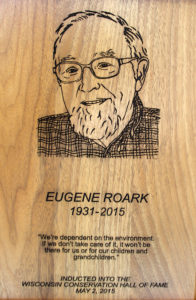 The list of organizations he has played an important role or which he supports is long and reveals a wide and passionate concern for numerous conservation matters. Further it is important to note that he has not only supported these organizations through his leadership but also through his activities. A member since 1992, Gene was a leader at Natural Heritage Land Trust which serves South Central Wisconsin. He was a member of the Wisconsin Society for Ornithology from the 1950’s until his death in 2015. He served on the board and edited their publication, The Passenger Pigeon for several years. He joined Dane County Conservation League in the 1950’s and served as a board member, president, chairman of the tree and shrub distribution program. He wrote the group’s newsletter for several years. He belonged to the Wisconsin Woodland Owners Association (WWOA) and had an extensive period of activity with Bad Axe chapter of WWOA from its beginning. These are just some examples of his many affiliations with conservation related organizations.
The list of organizations he has played an important role or which he supports is long and reveals a wide and passionate concern for numerous conservation matters. Further it is important to note that he has not only supported these organizations through his leadership but also through his activities. A member since 1992, Gene was a leader at Natural Heritage Land Trust which serves South Central Wisconsin. He was a member of the Wisconsin Society for Ornithology from the 1950’s until his death in 2015. He served on the board and edited their publication, The Passenger Pigeon for several years. He joined Dane County Conservation League in the 1950’s and served as a board member, president, chairman of the tree and shrub distribution program. He wrote the group’s newsletter for several years. He belonged to the Wisconsin Woodland Owners Association (WWOA) and had an extensive period of activity with Bad Axe chapter of WWOA from its beginning. These are just some examples of his many affiliations with conservation related organizations.
Gene knew people. His experience with the legislative process and personal relationship with legislators and agency administrators helped provide a voice for many conservation related organizations in the legislature and state agencies. He used his many contacts in the forestry community and in state government to help advocate for public funding and good public policy related to natural resource conservation at statewide conservation meetings and one-on-one with legislators and agency staff.
He led by example. A conservation easement with the Natural Heritage Land Trust was placed on 20 acres he owned along Lake Wisconsin in Columbia County in 2004 to protect the land and approximately 3500 feet of shoreline from development. The WDNR was especially anxious to preserve the shoreline, which is probably the largest undisturbed acreage on Lake Wisconsin.
In 1973, Gene and his wife purchased 120 acres of old farmland and woods in northern Richland County with the goal of increasing diversity on this property. The family planted thousands of trees and maintained the property through timber sales and regular deer hunting by family and friends, planting prairie grasses and native forbs in open areas to recreate pre-settlement plant communities. Yet the largest and most valuable trees remained.
Gene dedicated his personal life and public service to the land and its resources by advancing the Conservation Idea. He played a critical role in connecting various conservation interests from hunting and forestry to natural areas and parks. Wisconsin’s natural landscape would look vastly different without Gene’s conservation leadership.
Resources
Eugene Roark Senate Joint Resolution
Photos
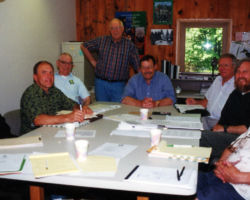
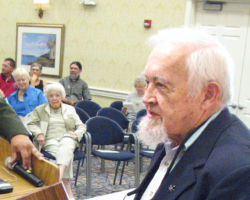
These images may be used under the Creative Commons Attribution-NonCommercial-NoDerivatives 4.0 International License.
